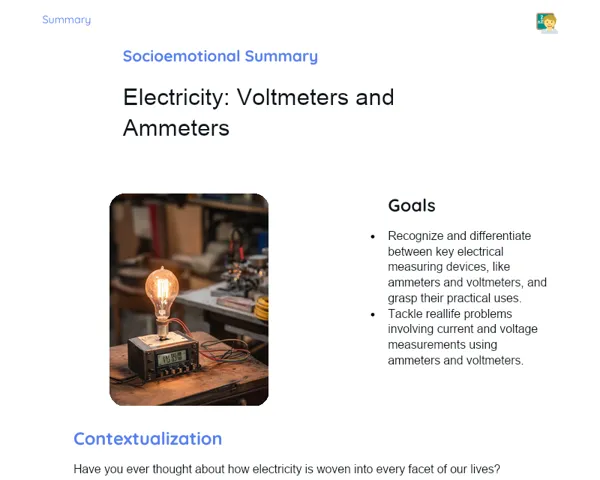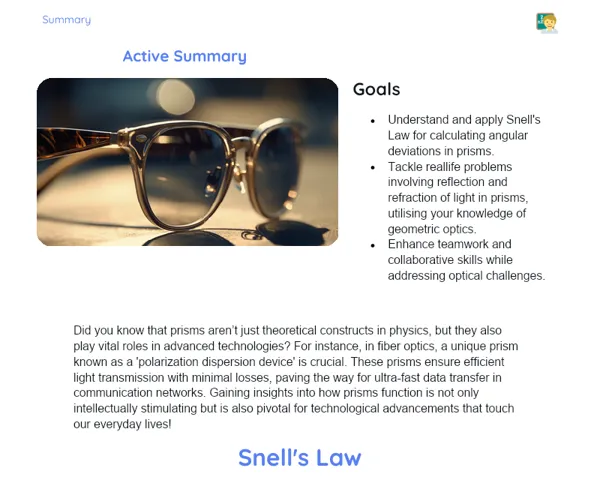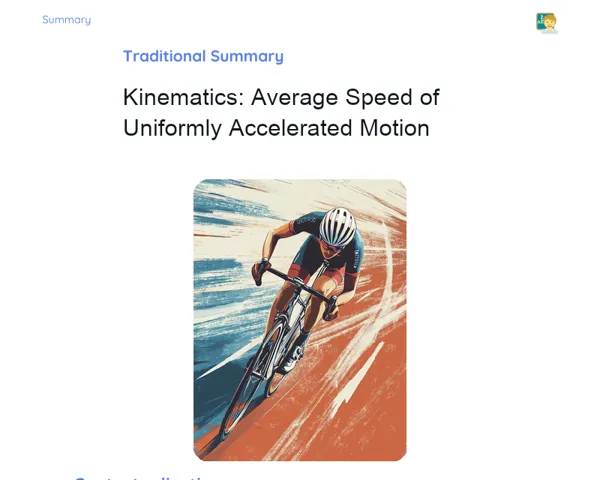Summary Tradisional | Waves: Reflection
Contextualization
Wave reflection is a basic concept in physics that explains how a wave behaves upon meeting a surface. This occurrence can be seen in various wave types, such as sound waves and light waves. When a wave hits a surface, part of its energy bounces back to where it originated, adhering to the Law of Reflection, which emphasizes that the angle at which the wave hits the surface (angle of incidence) is equal to the angle at which it reflects back (angle of reflection). This principle plays a vital role in understanding numerous natural and technological phenomena, like echoes and how mirrors function.
Grasping wave reflection is crucial for many real-world applications. For instance, the sonar technology that submarines use for detecting submerged objects is based on sound wave reflection. Likewise, medical ultrasound systems leverage reflected waves to generate images of the body's internal structures. These examples underscore the significance of studying wave reflection not just as a theoretical construct but also as a practical mechanism across various scientific and technological fields.
To Remember!
Principles of Wave Reflection
Wave reflection takes place when a wave strikes a surface and returns to its medium of origin. This phenomenon follows the Law of Reflection, which states that the angle of incidence equals the angle of reflection. Understanding this law is essential for anticipating how waves will behave when they encounter various surfaces.
For example, think of a light wave hitting a mirror. At the mirror's surface, the light wave gets reflected, and the angle at which it exits the mirror matches the angle at which it entered. This principle applies universally to not just light waves but also sound and water waves.
The Law of Reflection has multiple practical uses, from operating optical devices like mirrors and lenses to functioning of radar technology that relies on radio wave reflections for object detection. It also plays a significant role in acoustics, helping in the design of spaces with optimal sound properties.
-
Wave reflection occurs when a wave returns to the medium of origin after hitting a surface.
-
The Law of Reflection states that the angle of incidence is equal to the angle of reflection.
-
Practical applications include optical devices, radar, and acoustics.
Fixed End Reflection
When a wave reflects off a fixed end, the phase of the reflected wave inverts. If the incoming wave has a crest (the highest point), then at the same reflection point, the reflected wave will have a trough (the lowest point). This behavior is well illustrated using a string secured at one end.
Imagine a wave moving along a string that is fixed on one side. Upon reaching the fixed end, the wave reflects back but inverts its phase due to the fixed point's immobility, necessitating the wave's amplitude to invert.
Understanding fixed end reflection is crucial for applications like analyzing standing waves in musical instruments and wave behavior in confined systems, such as resonance tubes.
-
In fixed end reflection, the phase of the reflected wave inverts.
-
An incoming wave with a crest produces a reflected wave with a trough.
-
Important for analyzing standing waves and confined systems.
Free End Reflection
In contrast to fixed ends, when a wave reflects off a free end, it maintains its original phase. This means that a crest of an incoming wave will be reflected as a crest and a trough as a trough. This can be visualized using a string with one end free.
Imagine a wave moving along a string that has one end free. Upon reaching this free end, the wave reflects back while preserving its phase since the free end can move, maintaining the wave’s initial amplitude.
This phenomenon is relevant in studying waves through flexible media and is crucial for applications like antenna design and analyzing vibrations in mechanical structures.
-
In free end reflection, the phase of the reflected wave remains unchanged.
-
An incoming wave crest results in a reflected wave crest.
-
Important for studying waves in flexible media and antenna design.
Practical Applications of Wave Reflection
Understanding wave reflection has numerous practical applications across various fields of science and technology. A classic instance is the use of mirrors, which reflect light waves to create images. The Law of Reflection is fundamental in designing optical systems, such as telescopes and cameras.
Another key application is radar technology, which utilizes radio wave reflection to identify and locate objects. Radar sends out radio waves that bounce back from objects, allowing for the determination of the object's location and speed. This same principle is applied in sonar systems, leveraging sound waves to detect submerged objects.
In the medical field, wave reflection underpins ultrasound technology, enabling visualization of internal body structures without invasive procedures. Ultrasound sends sound waves that reflect off internal tissues, generating detailed images and aiding in diagnosing various health conditions.
-
Mirrors utilize the reflection of light waves to create images.
-
Radar and sonar use the reflection of radio and sound waves to detect objects.
-
Medical ultrasounds use the reflection of sound waves to generate internal body images.
Key Terms
-
Wave Reflection: The phenomenon wherein a wave returns to its originating medium post interaction with a surface.
-
Law of Reflection: Principle stating that the angle of incidence equals the angle of reflection.
-
Fixed End: Condition where the phase of the reflected wave inverts.
-
Free End: Condition where the phase of the reflected wave is preserved.
-
Sound Waves: Mechanical waves that travel through material media and are utilized in technologies like sonar and ultrasound.
-
Light Waves: Visible electromagnetic waves reflecting off surfaces like mirrors.
-
Radars: Devices employing radio wave reflection to identify and locate objects.
-
Sonar: A technology leveraging sound wave reflection to detect submerged objects.
-
Ultrasound: Medical technology that utilizes sound wave reflection to generate internal body images.
Important Conclusions
Wave reflection is a fundamental concept in physics, occurring when a wave strikes a surface and returns to its original medium, adhering to the Law of Reflection which states that the angle of incidence is equal to the angle of reflection. This concept is vital for understanding numerous natural and technological phenomena, like the formation of echoes and the functioning of mirrors.
Fixed end reflection leads to the inversion of the reflected wave's phase, while free end reflection retains the original wave's phase. Recognizing these varying behaviors is essential for analyzing standing waves, designing antennas, and studying vibrations in mechanical setups, among other applications.
The practical applications of wave reflection are extensive, encompassing technologies such as radars, sonar, and medical ultrasounds that utilize wave reflection to detect objects, create images, and assist in diagnostics. Therefore, understanding this phenomenon is crucial not only for theoretical physics but also across various scientific and technological disciplines.
Study Tips
-
Review the Law of Reflection and practice related problems to understand angles of incidence and reflection for different surfaces.
-
Experiment with strings and other materials to observe fixed and free end reflections, helping solidify these concepts.
-
Look into the practical uses of wave reflection, such as the operation of radars, sonar, and ultrasounds, to grasp their significance in real-world scenarios.



